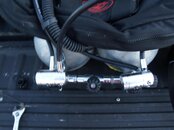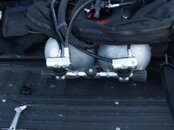I've never noticed much difference from the venturi adjustment on regs, so I honestly haven't even touched it on the HOG second stage. If it actually does something, I'll have to start using it!
Ok, so if user switchable isn't possible, is it hard to just flip the design around? In other words, will the world ever see a reg that works as well as this one (which obviously performs better than any other reg I own, or else it wouldn't be on my tanks and I wouldn't be looping the hose around the back of my neck to use it in SM) that has the inlet on the other side? These regs are so well priced that I can afford to buy them, and I'm slowly switching over all of my old regs with these, because I'm so impressed with the super high quality and the absolutely beautiful price tag.
i will sell so few that I would have to charge 3 times as much for it to make the investment worthwhile. I'm thinking folks won't want to pay that.





